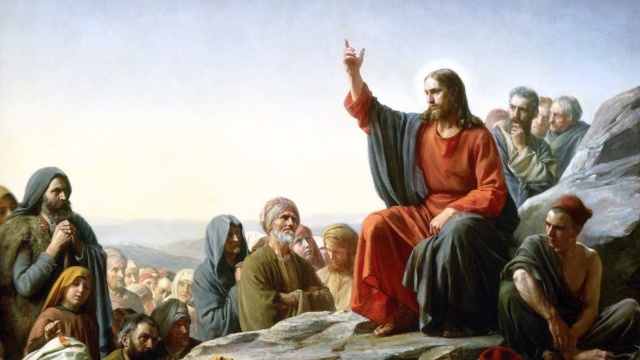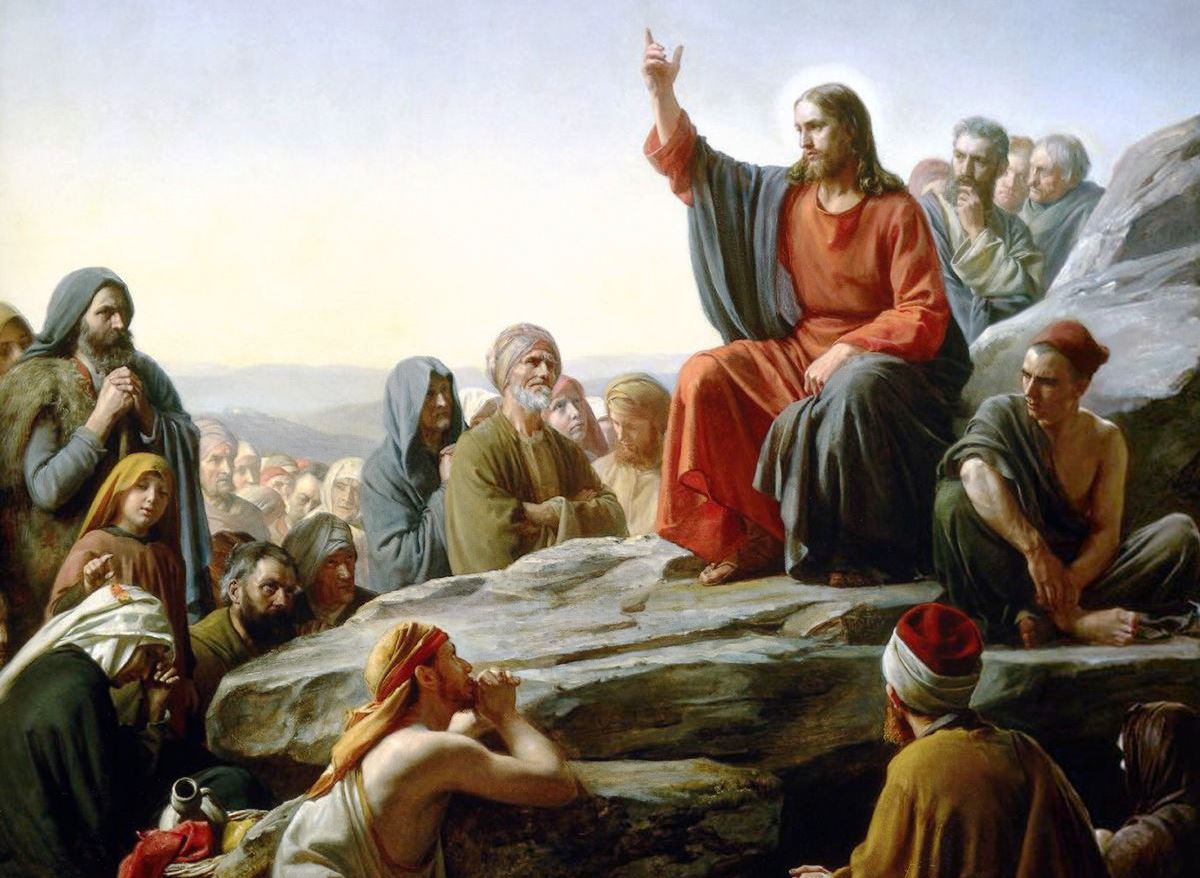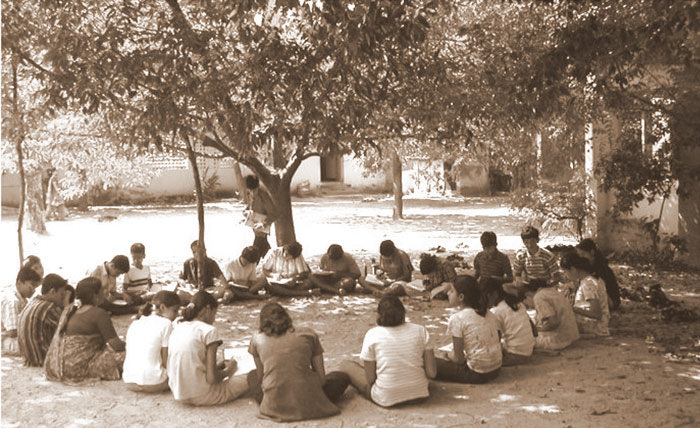On the occasion of Christmas, The New Leam shares an important insight into the moral question.

William Damon is Professor of education at Standford University; and Warren A. Nord is director of the Program in the Humanities and Human Values at the University of North California. In their books and research papers they have argued—with empirical evidence as well as philosophic insights—that we ought to take the moral question seriously, even though in the climate of cultural relativism there is skepticism towards solid moral certainties.
In our times it is not easy to speak of or plead for moral education. There are many reasons for this skepticism towards moral preaching. First, the proponents of moral education are often equated with a school of thought that promotes some sort of religious conservatism, and it is seen to be in conflict with our secular reasoning and celebration of individual freedom and choices. Second, it is argued that in the name of ‘universal’ moral principles we overemphasize consensus, and tend to negate the reality of conflict, differences and power in society. Third, in the age of deconstruction and cultural relativism there is no escape from the question: After all, whose morality is it?

If everything is ‘relative’ there is no solid foundation we can adhere to. No wonder, there is some uneasiness about morality. Yet, as teachers and parents we realize that not everything is fine with the way children are growing up in our times. Is it possible for us to tell them—be honest, be kind, have some self –restraint, if we ourselves begin to doubt the desirability of these principles? If we think that the discourse of honesty, kindness and self-restraint is deeply religious or conservative, or it is just an ‘ideology’ that conceals the reality of power and violence, what then should we do if we see that our children and adolescents are cheating in examinations, getting aggressive and violent, and watching pornographic sites? Should we remain utterly helpless because there is no solid moral universal anymore? Or should we rethink the entire issue, and try to go beyond the pitfalls of both moral conservatism as well as radical nihilism? It is great to see researchers addressing this issue which bothers all of us. It is in this context that we wish to refer to the works of two American educationists—William Damon and Worren A. Nord. Although their observations are with reference to contemporary American society, the insights we gain, we believe, have a universal appeal.
To begin with, let us reflect on William Damon’s revealing essay: To Not Fade Away: Restoring Civil Identity Among the Young. What strikes one is Damon’s deep concerns and anxiety. ‘In the climate of moral relativism’, as he articulates with a sense of sadness, ‘a teacher’s reprimand to a student, when phrased in a moral language of right and wrong, can and does lead straight to litigation in today’s school world.’ In fact, as we are told, a growing number of public schools in the United States are being sued by parents who believe that their children have been unfairly accused of moral infraction. Damon writes: ‘I have seen this happen in a number of cases—often in matters related to honesty (cheating, lying to a teacher, forging excuses from a parent), but also in matters related to seriously harmful behavior (racial or ethnic slurs, harassment, violent assault).’ However, Damon insists that this sort of moral relativism or ‘anything goes constructivism’ is harmful.
For him, moral standards are not arbitrary; ‘they reflect basic human truths and therefore merit a sense of certainty.’ Yes, it is true that it is not easy to speak of honesty in a corrupt society. No wonder, as Damon’s findings suggest, ‘many, if not most, of the teachers publicly expressed the opinion that it was hard for them to hold students to a no-cheating standard in a society in which people cheat on taxes, the President cheats on his spouse, and so on.’ Not solely that. In an environment that ‘discourages discipline, external feedback and objective standards’, and promotes some sort of postmodernist views that question’ the feasibility of ‘any solid moral truths’, many teachers, as we are told, ’sympathized with the cheaters because the tests were somewhat flawed, or because the cheaters had been acting out of loyalty to their friends by secretly sharing the information.’ Yet, Damon seeks to see beyond this intellectual trend; he believes that young people need to hear clear and consistent messages regarding honesty from all the respected people in their lives if they are to take the message to heart. After all, moral standards, Damon doesn’t forget to remind us, reflect a living tradition of past and present judgments, about what ‘people in society consider to represent the good in human affairs.’ Hence it is important that moral guidance should come from many sources and take many forms.
To quote him:
A student best learns honesty when a teacher explains why cheating undermines the academic mission, a parent demonstrates the importance of telling the truth for family solidarity, a sports coach discourages deceit because it defeats the purpose of fair competition, and a friend shows why a lie undermines the trust necessary for a close relationship. The student then acquires a living, felt sense of why honesty is important to all the human relationships that the student cares about.
Furthermore, what worries Damon is the absence of civic responsibility among the young. He collected a series of in-depth interviews with youngsters aged fourteen to eighteen living in some heartland of American communities. And they showed little interest in people outside their immediate circles of friends and relatives; little awareness of current events; and ‘virtually no expressions of social concern, political opinion, civic duty, patriotic emotion, or sense of citizenship in any form.’ But Damon seems to be convinced that it is important to develop a sense of patriotism because ‘for full participatory citizenship in a democratic society, a student needs to develop a love for the particular society, including its historical legacy and cultural traditions.’ It is not that he is unaware of the possible danger of patriotism; it can be degenerated into a cult of militant/chauvinistic nationalism; it can limit one’s horizon. He is also aware of what a thinker like Martha Nussbaum pleads for. She, we know, reminds us of the danger of ‘irrational patriotism’; she prefers ‘cosmopolitan education’ because ‘by looking at ourselves through the lens of the other, we come to see what in our practices is local and nonessential, and what is more broadly or deeply shared.’ Damon makes his position clear. It is by no means his contention to ‘paint for children a falsely glowing picture of their country’; but it is equally important to remember that it is our responsibility to ‘present the country’s shortcomings within a positive framework—that is, in perspective of its noblest aspirations, traditions, attainments, and ideals.’ With this clarity Damon pleads for positive possibilities:
Schools and communities must work together to create opportunities for young people to participate in civic and political events at every level, from the school to the broader society. In the classroom, coursework should make connections between these lived experiences and the challenges faced by historical or present day civic leaders. Within and beyond the classroom, young people should be given a sense of their own potential roles in the continuing drama of their society’s search for a more exemplary democracy.
The message we receive is that one should not abandon the moral question. Warren A. Nord too takes up the challenge and raises a set of refined/ delicate issues in his paper Moral Disagreement, Moral Education, Common Ground. True, Nord admits that moral education is often equated with character education; it tends to become conservative; it draws heavily on Plato and Aristotle, but ignores Marx and Foucault. As Henry Giroux charges, ‘there is no talk of conflict within this discourse, no mention of messy social relations of sexism, racism, and class discrimination.… It is the discourse of uneasy harmony, one that smoothes over the conflicts and contradictions of everyday life.’ However, Nord insists that some sense of honesty and integrity, kindness and responsibility are essential to the survival and well-being of society and to being a good person. And ‘however conservative (and , consequently, controversial) some advocates of character education might be, it remains true that there are common, perhaps even universally shared, virtues and values, and it is tremendously important that students acquire them.’ But then, Nord reminds us that character education or moral education should not be a matter of indoctrination; it is important for young learners to think, reflect, explore alternative possibilities and argumentations, and then arrive at a conclusion.
No wonder, Nord suggests that ‘to be able to think critically about the moral domain of life, students must know something about the alternatives when we disagree.’ He hopes that a good liberal education will make students aware of a variety of moral and social practices and institutions. It is in this context that Nord takes a courageous position. If we are truly liberal and sensitive to multiple perspectives, we should not allow the cult of secular education to marginalize religion both intellectually and culturally. ‘If students are to be able to think critically about the secular ways of understanding the world that pervade the curriculum’, writes Nood, ‘they must understand something about the religious alternatives.’ This does not mean that one has to accept religion; what Nord suggests is that even religion has a story to tell, and we must know about it before arriving at a conclusion. Take, for instance, the issue of abortion. Nord’s vision of a good liberal education becomes pretty clear when he writes:
Certainly students should understand the point of view of the Roman Catholic Church and those religious conservatives who believe that abortion is murder. They should also understand the point of view of those religious liberals (from various traditions) who are pro-choice. They should understand feminist positions on abortion. They should learn about the key Supreme Court rulings and different ways of interpreting the implications of political liberty for the abortion debate. Students should read primary source documents written from within each of these traditions. And, of course, teachers and texts should not take positions on where truth lies when we are so deeply divided.
Likewise, Nord makes us question the way economics—one of the most celebrated branches of knowledge— is taught. Look at what the ‘value-free’ neoclassical economic theory assumes: ‘The economic world can be defined in terms of the competition of self-interested individuals with unlimited wants for scarce resources; and decisions should be made according to cost-benefit analyses that maximize whatever it is that we value and that leave no room in the equation for duties, the sacred, or those dimensions of life that are not quantifiable.’ In other words, you get the message—economics is one thing, morality is , quite clearly, another. As Nord suggests, we should not forget that in contrast to neoclassical economics, religious traditions have emphasized cooperation over competition and are deeply wary of the ‘corrupting influence of wealth, materialism, and our consumer culture.’
In fact, by negating all alternatives, the texts of neoclassical economics ‘covey uncritically to students a particular way of thinking about values, human nature, and social institutions that is deeply controversial.’ Nord makes his position quite clear: ‘I am not so quixotic as to recommend that economics courses balance neoclassical theory and social science with moral philosophy or theology at every turn; but I do think that economics texts should be at least minimally fair by acknowledging, and outlining, alternatives to neoclassical theory.’ The message that Nord seeks to covey is that it is important for students to understand, in some depth, the major contending ways in which humankind has made sense of reality and the moral dimension of life. This is not to suggest that we have to agree with each other about all these moral, political and religious ideas. But what is truly essential is that ‘we agree about how to disagree—with civility and fairness, taking each other seriously.’
The issues that these two educationists are raising are immensely relevant. If we look at our own context we experience a series of problems causing severe moral crisis: communal hatred, consumerism and intense competitiveness, economic disparity and growing indifference to collective well-being. Under these circumstances how do we nurture our children? Should we try to make them sensitive, and tell them that it is desirable to restrain the ‘pleasures’ of consumerism, and value simplicity, inner strength and concern for others? Or should we suspect all these ideals as some sort of moral conservatism or religious puritanism? Or is it possible for us to acquire the courage to assert that even a radical/secular project—say, the project of a democratic/egalitarian/environmentally sensitive society—is impossible to implement without the basic moral principles like personal integrity, honesty, non-possessiveness and ethos of care and love? Damon and Nord help us to cope with these questions.
SOURCE: Daine Ravitch and Joseph P. Viteritti (eds.) Making Good Citizens: Education and Civil Society, Yale University Press, New Haven and London, 2001
The New Leam has no external source of funding. For retaining its uniqueness, its high quality, its distinctive philosophy we wish to reduce the degree of dependence on corporate funding. We believe that if individuals like you come forward and SUPPORT THIS ENDEAVOR can make the magazine self-reliant in a very innovative way.










